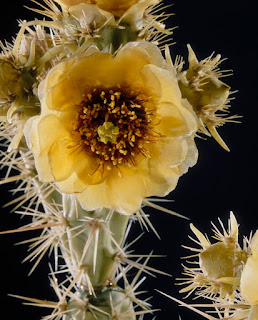The other day I was introduced to a collection, housed at Harvard, of glass flowers—otherwise known as the Ware Collection of Blaschka Glass Models of Plants. As the website puts it, "This unique collection was made by Leopold (1822–1895) and Rudolf Blaschka (1857–1939), a father and son team of Czech glass artists. Over fifty years, from 1886 through 1936, the Blaschkas produced 4,300 glass models that represent 780 plant species." Here are a few of those creations (click on the images to see them large):
But as if that isn't amazing enough, the Blaschkas also did sea life! For example:
Here is a video from the Corning Museum of Glass on the duo:
And here's a long one on the sea creatures, but it's weirdly fascinating:
Such artistry. Just incredible.
This is what got me here—a poem by wonderful Mark Doty:
The Ware Collection of Glass Flowers and Fruit, Harvard Museum
Strange paradise, complete with worms,
monument of an obsessive will to fix forms;
every apricot or yellow spot's seen so closely,
in these blown blooms and fruit, that exactitude
is not quite imitation. Leaf and root,
the sweet flag's flaring bud already,
at the tip, blackened: it's hard to remember
these were ballooned and shaped by breath.
They're lovely because they seem
to decay: blue spots on bluer plums,
mold tarring a striped rose. I don't want to admire
the glassblower's academic replica,
his copies correct only to a single sense.
And why did a god so invested in permanence
choose so fragile a medium, the last material
he might expect to last? Better prose
to tell the forms of things, or illustration.
Though there's something seductive in this impossibility:
transparent color telling the live mottle peach,
the blush or tint of crag, englobed,
gorgeous, edible. How else match that flush?
He's built a perfection out of hunger,
fused layer upon layer, swirled until
what can't be tasted, won't yield,
almost satisfies, an art
mouthed to the shape of how soft things are,
how good, before they disappear.
(NB: After reading this poem the other day, Mark explained that he later learned that these creations were not mouth-blown, but were molded. But he'd written the poem, and so there it is, for all time.)













No comments:
Post a Comment